The Common Functional Foot Types (FFT’s)
|
Imagine the world before blood typing. There was transfusion death, no universal donor, no universal recipient and maybe even more important, no mechanism to educate the medical community and the public about blood.
Now imagine a world where profiling feet into foot types would allow an upgrading of subtalar neutral casting and orthotic prescribing, foot type-specific, while providing a language and paradigm that could acculturate the medical community and the public about the need for and outcome potential of podiatric biomechanics.
Neoteric Biomechanics foot types all feet into one of sixteen functional foot types (FFT’s) each with its own characteristic strengths and weaknesses, x-ray presentation, lesion pattern, shoe wear and open and closed chain presentation.
Once a Podiatrist diagnoses a patient’s foot type it opens up doors to offering prevention, performance enhancement, and improved quality of life to our patients.
Treatment options that are beneficial to one foot type and harmful to others can be offered foot type-specific. For example, Rigid Rearfeet do well in a shoe with a 1-2” heel that would be harmful to many rearfoot types.
Finally, although there is a bell curve within each foot type with no two feet alike, the common characteristics within each type allows DPM’s to offer focused care and better outcomes with fewer complications and failures. In summary, the structural and functional variations that exist within each FFT prevent the development of a “cookbook” plan for care.
For the purpose of introducing Functional Foot Typing to Podiatry, it makes sense to start with The Five Common FFT’s since 90% or more of all feet classify into one of them.
Here's a table displaying the Five Common FFTs:
By definition, the pure FFT’s have the same rearfoot and forefoot biomechanics. They are the rigid/rigid, the stable/stable, the flexible/flexible and the flat/flat.
|
The Rigid Rearfoot–Rigid Forefoot Foot Type |
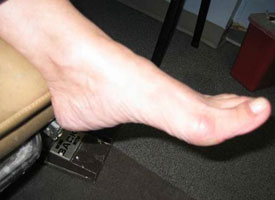 |
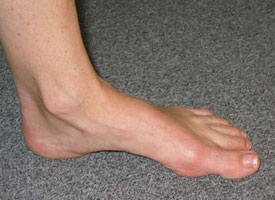 |
| The rigid rearfoot, rigid forefoot FFT is engineered most like an architectural arch. The bones and ligaments are naturally tight and locked into an arch shape. It supports the ground and weight well but it is a poor morpher, shock absorber and lacks flexibility. It appears almost the same in both open and closed chain. |
| |
|
The Stable Rearfoot–Stable Forefoot Foot Type |
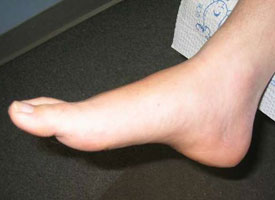 |
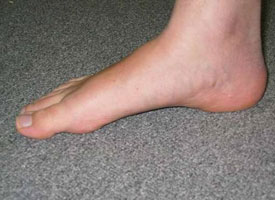 |
| The stable rearfoot, stable forefoot type is the closest FFT to “normal”. It is supportive, morphs well and is a good mobile adaptor. The stable/stable needs the least external support, muscular training and re-education until stressed by increased demand for support or when overused. Its arches collapse slightly from open to closed chain. |
| |
|
The Flexible Rearfoot–Flexible Forefoot Foot Type |
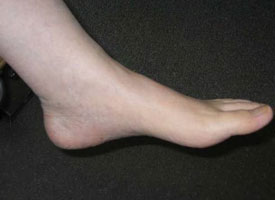 |
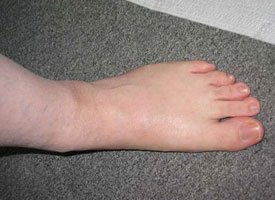 |
| The flexible rearfoot, flexible forefoot type is an excellent morpher and shock absorber but it does not support or function well because both pillars collapse in closed chain. This foot type never allows muscles the mechanical advantage to be a supporter or rigid lever. Lax ligaments and inefficient muscles never overcome the forces of gravity and hard, unyielding surfaces. It is collapsed, wide and loose in both the rearfoot and forefoot when weightbearing. |
|
The Flat Rearfoot–Flat Forefoot Foot Type |
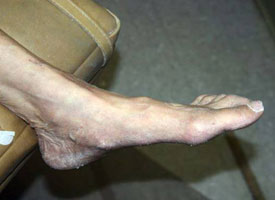 |
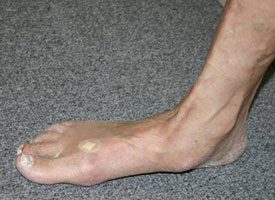 |
| The flat rearfoot, flat forefoot foot type is not a good supporter or rigid lever, nor is it a good morpher or shock absorber. The bones of this foot type are flat and cannot assume an arch shape in open chain or closed chain. The flat/flat foot type is the most unhealthy foot type because its engineering fails at all times. |
| |
|
(The Fifth FFT) The Rigid Rearfoot–Flexible Forefoot Foot Type |
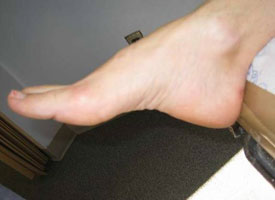 |
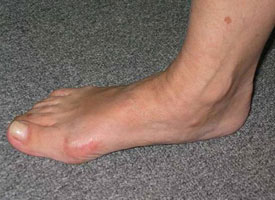 |
| The rigid rearfoot, flexible forefoot foot type is the most common FFT. In this foot type, the rearfoot is a good supporter and rigid lever but a poor morpher and shock absorber. The ligaments are tight and there is rearfoot muscular leverage at all times. In contrast, the forefoot of this foot type is flexible and therefore a good morpher and shock
absorber but depending upon this foot types ability to leverage and train the forefoot muscles to support the forefoot against collapse, this foot type can range from a poor supporter and rigid lever (the bunion foot) to an almost perfect supporter and rigid lever (the ballerina foot) or anything in between. |
The common FFT’s have specific muscles and tendon insertions that are too weak, too strong, too tight or too loose. This means that the FFT’s can be compensated with a custom Foot Centring along with physical therapy, rehab and motor control care that would be more effective than a STJ Neutral casting and prescription.
For example, in the Rigid/Flexible FFT, the STJ is inverted and has an end range of motion that falls short of vertical upon stance. The rearfoot has little to no pronatory collapse as these feet bear weight.
The ligaments in this rearfoot are tight, thick and strong, cementing proximal bones firmly together. The muscles controlling the rearfoot are strongly leveraged and tend to contract over time and become fixed. A tight heel cord with functional equinus is the obvious finding but the anterior tibial, the posterior tibial and peroneus brevis are tight as well.
The forefoot is loose and lacks the ability to lock into place in order to provide support unless trained. These forefeet are excellent shock absorbers and morphers but poor supporters and rigid levers. The forefoot collapses in length and width from midstance on in gait and weight of the forefoot is displaced proximal resulting in secondary soft tissue compression of the rearfoot medially causing varying degrees of total foot collapse.
The forefoot muscles perform poorly, especially those that defend the medial dynamic arch unless centered and trained. Peroneus longus, flexor hallucis longus, adductor hallucis and the “core” intrinsic muscles lack mechanical advantage in closed chain.
The goal of any practitioner of human biomechanics or kinesiology should be to offer every individual a quality of life that approaches his/her inherited and natal potential by being capable of overcoming the deforming forces of gravity, the hard, unyielding ground, hard and unyielding shoe boxes. In addition this excellent quality of life should be accomplished with minimal foot and postural degeneration and deformity.
Neoteric Biomechanics unlocks new doors for Podiatrists to offer non surgical custom care and improved treatment for the foot suffering community that cannot be duplicated by others.
Join in on these Biomechanic eTalk discussiosn taking place right now on podiatry.com |
|
|
Next Issue: Beyond Subtalar Neutral
|